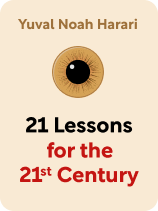

This article is an excerpt from the Shortform book guide to "21 Lessons for the 21st Century" by Yuval Noah Harari. Shortform has the world's best summaries and analyses of books you should be reading.
Like this article? Sign up for a free trial here .
What is culturism? How does it relate to racism?
Culturism is a form of discrimination on the grounds of cultural norms. Since science has debunked all the myths about the biological superiority of one race over another, culturism has become more common than racism.
Keep reading to learn about the shift from racism to culturism.
What Is Culturism?
To understand culturism, imagine someone migrates from the fictional country of Coldia to the fictional country of Warmland. Culturally, Coldians tend to repress emotional outbursts, avoid conflict, and let issues simmer quietly, while Warmlanders value confrontation and expressions of emotion in order to resolve conflicts and move forward. When the Coldian immigrant applies for a job in Warmland, the hiring manager sees the Coldian as emotionally distant, unfriendly, and cold. The job involves a lot of interaction with employees and clients, and the hiring manager doesn’t think the Coldian would be effective, so she offers the job to a native Warmlander instead of the immigrant.
Similar situations play out in all kinds of contexts. On one hand, the hiring manager may objectively be looking for the best fit for the job. On the other hand, a cycle develops in which immigrants are kept in lower positions because they follow different cultural norms, and that limits their ability to prosper in their new country. These are the effects of culturism.
Although it’s often called racism, culturism is more common today than racism, which is based on old notions of racial superiority based on biology. However, science has debunked such ideas, and now discrimination is based on culture rather than biology—hence, culturism. This shift brings two main changes:
- Culturists can be somewhat more tolerant than racists, because the discrimination is based on a person’s culture, which can change, rather than her biology, which is fixed. However, this also means that culturists are inclined to pressure people to assimilate to the supposedly superior culture, and they’re likely to be more critical when people don’t assimilate. For example, culturists might accuse Black Americans of not trying hard enough to pull themselves up by their bootstraps and climb the corporate ladder, while they overlook the fact that layers of institutional discrimination stand in their way.
- Culturists can make valid arguments in some cases—as in the example with the Coldian job applicant. The Coldian’s culture dictated different social etiquette, and those differences would be a legitimate challenge in succeeding in the job. Still, is it unethical to refuse someone an opportunity because of her cultural norms?
It’s difficult to draw the line between cultural differences and discrimination. In fact, culturism clearly crosses into bigotry in three ways:
- A particular culture may be superior in a specific context—such as in the Coldian example, a Warmlander would probably be a better fit for the job because it deals with other Warmlanders. However, the argument becomes discriminatory when people confuse local or context-specific cultural superiority with objective superiority, such as thinking a Warmlander is always the best job candidate for any position in any country.
- Some cultural claims are true within a specific scope—for example, Coldian culture is less tolerant of confrontation than Warmland culture. However, cultural claims become flawed when they’re overgeneralized and ambiguous, such as saying that Coldian culture is intolerant. Such a statement doesn’t specify what or whom Coldians don’t tolerate.
- Culturism may accurately assess a culture on a broad scale. However, issues arise when culturists overlook individual differences. Within any culture, there are people who don’t fit the general stereotype, and others who fall on a spectrum somewhere in between. This becomes dangerous when, for example, the Warmland hiring manager refuses to consider any Coldian on the assumption that they’re all distant and averse to conflict.

———End of Preview———
Like what you just read? Read the rest of the world's best book summary and analysis of Yuval Noah Harari's "21 Lessons for the 21st Century" at Shortform .
Here's what you'll find in our full 21 Lessons for the 21st Century summary :
- What the unique challenges of the 21st century are and will be
- Why religion can't solve these 21st-century challenges
- How algorithms like Netflix recommendations are teaching you not to trust yourself






